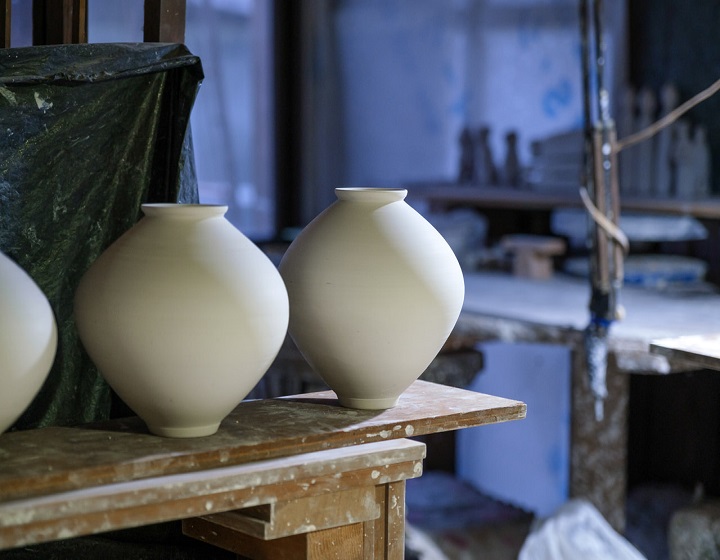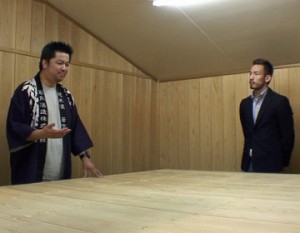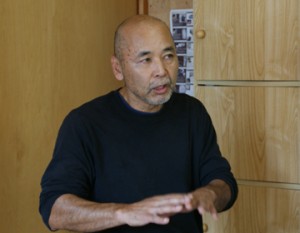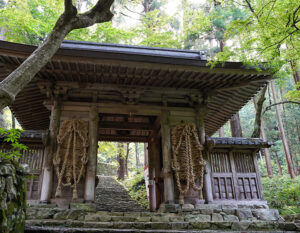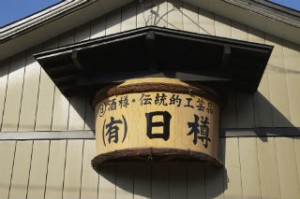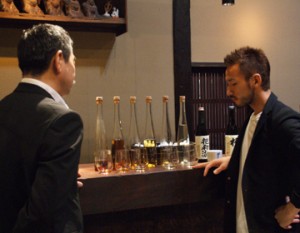Choi Je-ho (Choi Jae-ho) navigates between the contrasting realms of contemporary art and traditional craftsmanship, proposing a sensual take on the beauty of white porcelain. Though rooted in Korea, he chose Japan as his creative base, and his exhibitions and art collaborations across the country have garnered significant attention. What new world does Choi Je-ho add to the established norms of simple yet elegant white porcelain?
Pottery born in the mountains of Shunan City, Yamaguchi Prefecture, rich in nature
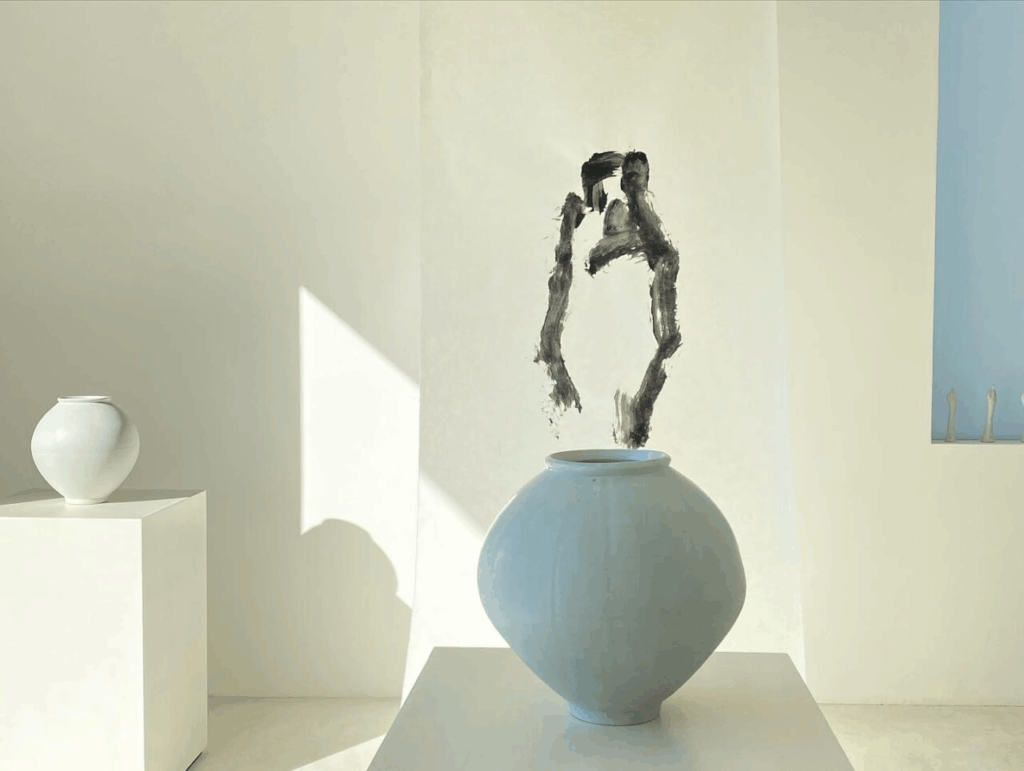
Located in the southeastern part of Yamaguchi Prefecture, Shunan City is home to Choi Je-ho, who runs his workshop in a quiet mountainous area rich in nature. Originally from Busan, South Korea, Choi moved to Japan in 2004 at the age of 33.
He is an artist specializing in “white porcelain,” a simple ceramic ware with a white base glazed with transparent glaze, said to have been introduced to Korea from China during the Joseon Dynasty. His unique texture, soft curves, and distinctive white hue, created exclusively by Choi Je-ho, captivate anyone who holds his pieces in their hands. His works, which blend the antique charm of traditional white porcelain with modern sophistication, are bringing a fresh breeze to the Japanese white porcelain scene.
Choosing Japan as a place of expression
Chooi Je-ho first visited Japan at the age of 31. He was invited to participate in a group exhibition in Japan and had the opportunity to stay at a pottery studio in Seto City, Aichi Prefecture, for about two months to create his works. He was deeply impressed by the passion of the Japanese people for ceramics and the unique texture of the clay used for Japanese white porcelain, which he encountered for the first time.
“In my home country of South Korea, there is a significant gap in understanding between fine art crafts displayed in museums and art galleries and folk crafts used in daily life. In Japan, the boundary between the two is a subject of debate, indicating that the environment surrounding crafts is highly mature. Even white porcelain without ornate decorations is highly regarded as art, and I was impressed by the Japanese people’s sensitivity toward crafts. I was convinced that Japan had the space to accept the world of white porcelain that I wanted to express, and I decided to move there to establish my base for pottery.”
Relying on his wife’s family from Hiroshima, he searched for an old farmhouse in nature where he could freely create pottery without worrying about noise or smoke, despite some inconveniences. He finally found it in Yamaguchi Prefecture. He decided to purchase it based solely on photos and price while still in Korea.
Opening the door to the world of art through ceramics
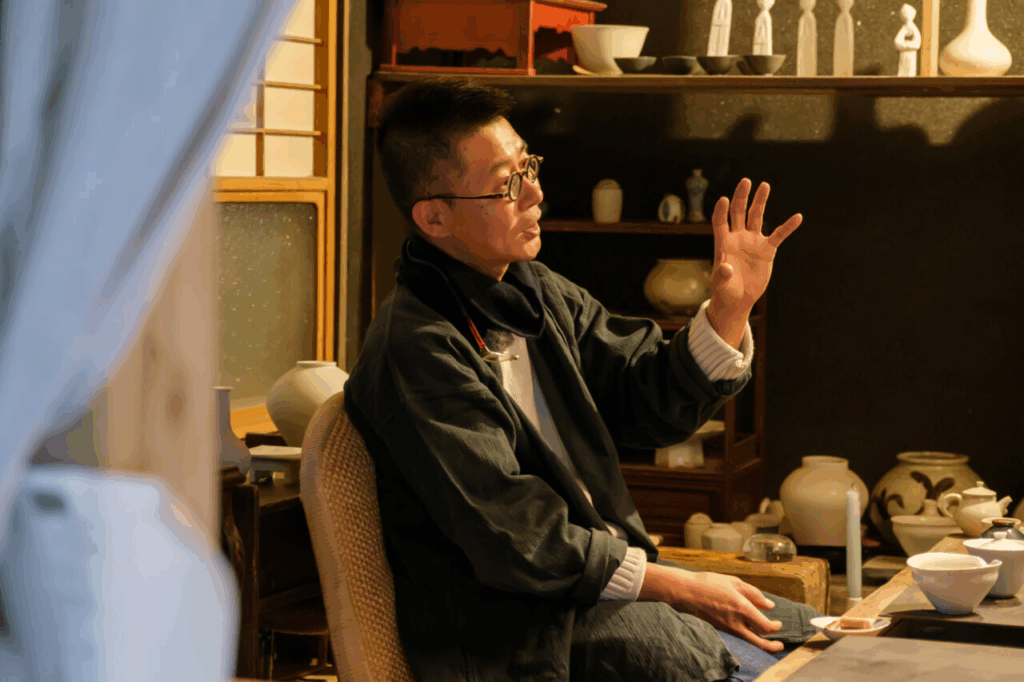
Choi Je-ho first became interested in white porcelain during his second year of university. He had loved drawing since childhood and was a member of the art club in middle school. He had a particular interest in contemporary art and aspired to attend Hongik University, one of the top art universities in South Korea, to study painting. However, due to the high difficulty of the painting course he desired, he took three years off before applying again. In his fourth year, he decided to prioritize admission and enrolled in the ceramics department of the same university. He knew that even if he couldn’t study in his desired department, interacting with his artistically talented peers would be a valuable stimulus for him.
Led by such life choices, Che Je-ho embarked on the path of ceramics. He studied the fundamentals of ceramics as a form of contemporary art and immersed himself in creating objects. During a second-year university class, he visited a national museum to research classical art for a report and was captivated by a white porcelain piece from the Joseon Dynasty (1392–1897) called “Full Moon Jar (Talhanari).” This encounter would change the course of his life. He was captivated by the indescribable soft lines, the texture of the surface, and the warm white color. He became obsessed with the world of classical white porcelain from the Joseon and Goryeo periods, aspiring to create similar works himself one day.
From contemporary art to the world of traditional crafts
By the time he graduated from university, he had decided to become a white porcelain artist rather than a contemporary artist. He wanted to become an artist who could recreate the emotions he felt from Joseon-era white porcelain works in his own creations. In Korea, it is difficult to obtain clay suitable for white porcelain, and there are few white porcelain artists. I struggled to find a master to apprentice under. Through connections with my professor, I finally found a master who specialized in restoring antique art and replicating classical works. I learned the colors of Korean white porcelain and developed an eye for appreciating classical works.
The teachings of my mentor that I continue to uphold
The teachings of my mentor were not to imitate the works of contemporary artists of the same generation, but to “learn by observing beautiful and good works displayed in museums and art galleries.” By experiencing the genuine works that people have sought to preserve across generations, feeling them with your heart, and expanding your imagination, you can learn the balance and texture that emerge from them. It is important to express your own interpretation through your sensibilities. He says that when you can interpret things in your own way, you can create unique works that are not replicas.
Choi Je-ho still follows this teaching and makes a point of visiting museums and art galleries whenever he has a solo exhibition or business meeting. He often visits the Tokyo National Museum and the Japan Folk Crafts Museum. Even now, when he is busy creating original works, he values input time above all else.
Deciding to go independent and creating his representative work
Two and a half years after becoming an apprentice, he faced the misfortune of his master’s passing. Though he hadn’t fully prepared for independence, he decided to take the first step as a white porcelain artist. He resolved to make the “Full Moon Jar,” which had deeply moved him in a university report, his representative work. Since then, he has continued to create works pursuing the ideal curves and surface texture he seeks.
Choi Je-ho’s white porcelain
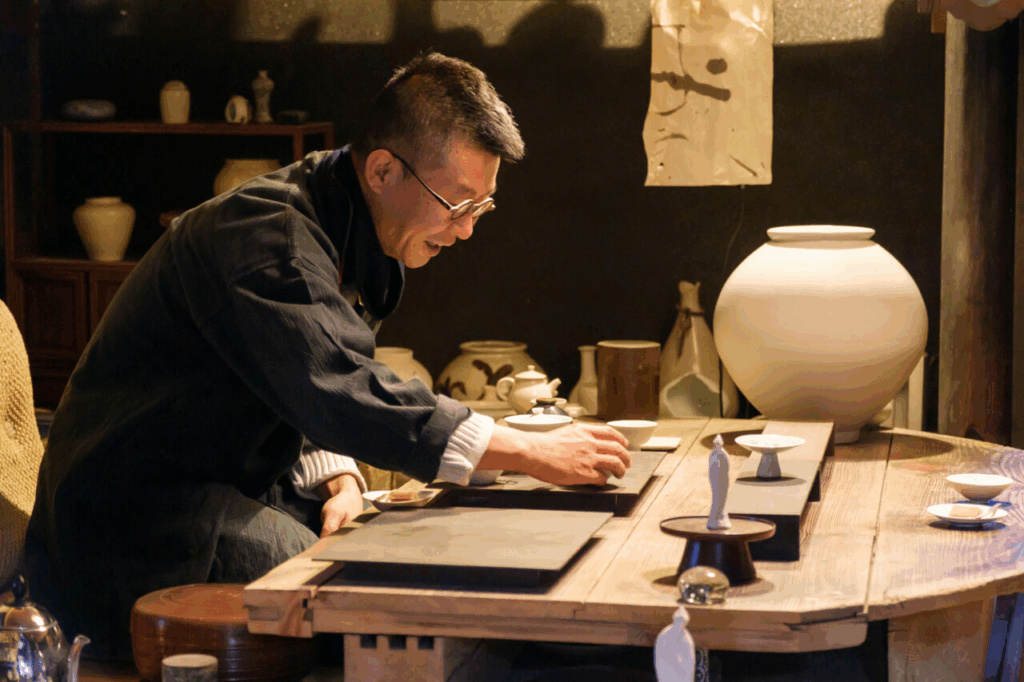
White porcelain is a type of pottery classified as “porcelain” in the field of ceramics, with stone known as “pottery stone” as its main raw material. It is characterized by being fired with a transparent glaze to achieve a white color, and is well known for its vivid designs, such as the “Arita ware” from Saga Prefecture and the “Kutani ware” from Ishikawa Prefecture.
Choi Je-ho’s white porcelain works use three types of clay with low iron content. He mixes white porcelain clay for ceramics with Arita stone from Saga Prefecture and Korean kaolin clay, which enhances the unique whiteness of his works. The iron-free transparent glaze transforms the base clay’s white color into a milky white hue, and when light passes through, it creates a translucent quality that combines the crisp luster of white porcelain with a gentle warmth.
During production, no measurements are taken. After initially weighing the clay, the artist relies solely on the sensation of their fingers to thin the clay to the absolute limit, valuing the natural distortions and the beauty of the lines. The pieces are not only meant to be displayed but are also thin and lightweight, making them highly functional. Additionally, the subtlety of the white color elegantly highlights plants and flowers, enhancing their beauty.
Representative work: “Full Moon Vase”
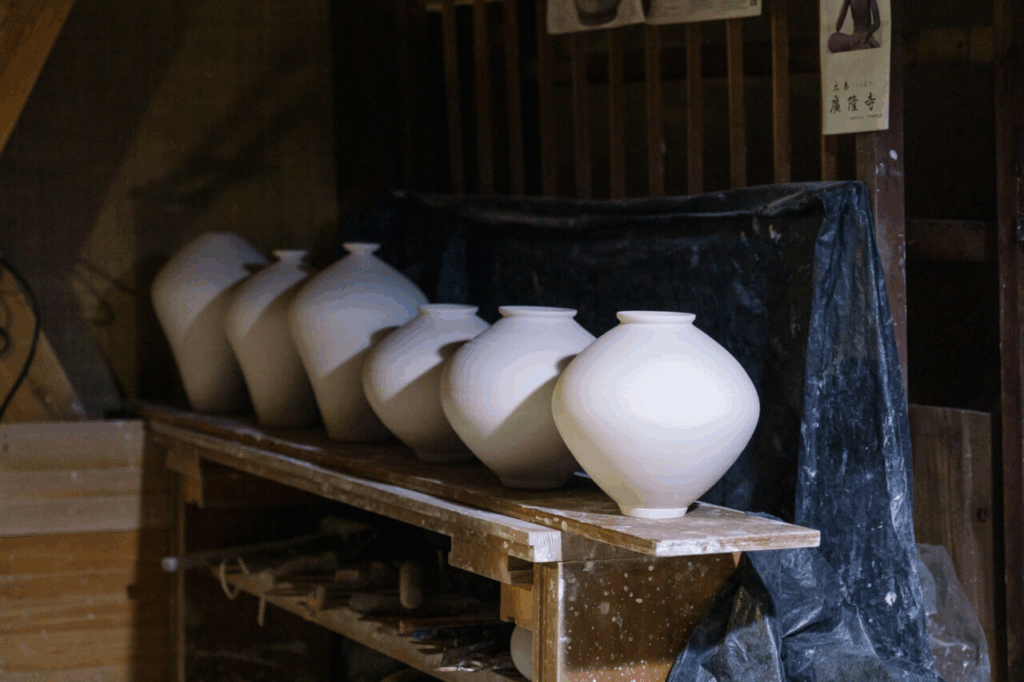
The Full Moon Jar is a large jar that can be held in both arms. It is called the “Full Moon Jar” because its shape resembles a full moon. This technique has been passed down since the era when white porcelain was designated as exclusive porcelain for the Korean royal court, and its delicate lines and large curves provide a sense of healing to those who see it. The pot is made using a technique called “torso joining,” where two bowl-shaped prototypes are joined together vertically and then fired in a kiln. While it does not form a perfect sphere, the resulting pot boasts an overwhelming bulge and natural distortion, harmoniously blending simplicity with warmth and strength. Many are captivated by the vase’s generous warmth, and those enchanted by white porcelain often find themselves drawn to the desire to own this Full Moon Vase.
Choi Je-ho aims to express the texture that can only be achieved by hand, something absent in mechanically produced pieces, and to evoke the breath of the potters who lived during the Joseon Dynasty. The “warmth” that emanates from the Full Moon Jar resembles the gentle warmth of a mother holding a newborn baby. The charm that makes it feel human, despite being an object, stems from the emotions the potters poured into their craft. He refers to this as “allure” and is committed to infusing the Full Moon Jar with his own unique interpretation of this allure.
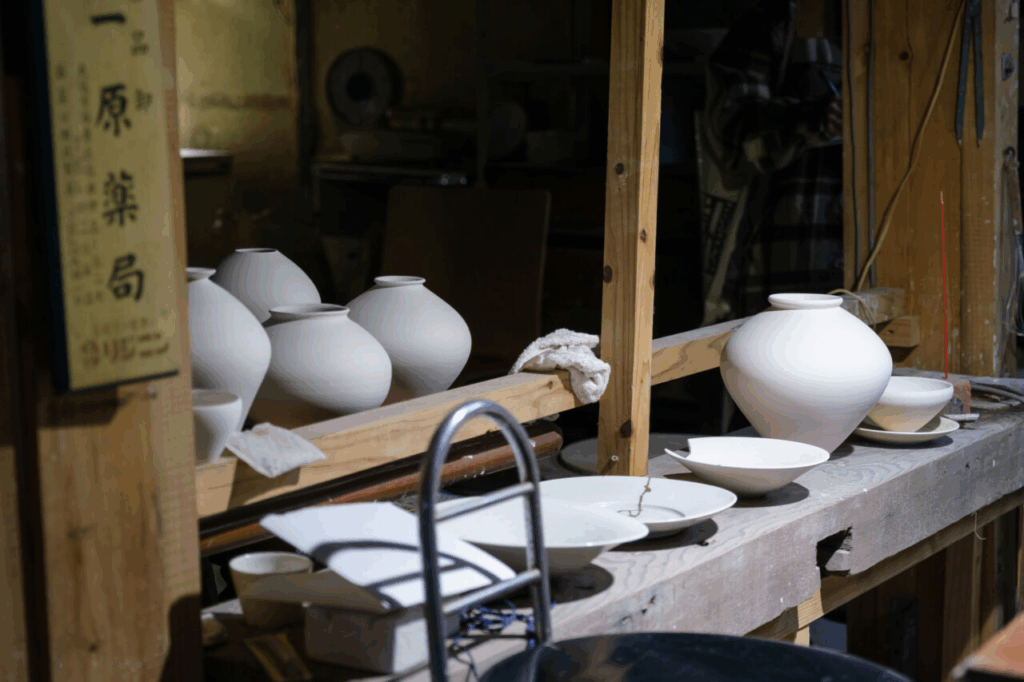
The path to success in Japan
When I first moved to Japan and started creating art, I had no money and spent my days renovating an old house I had barely managed to acquire, while working on my art. With no recognition in Japan, my works under the name “Choi Je-ho” didn’t sell. Eventually, I ran out of funds to even create new pieces, leaving me feeling utterly lost. There were moments when I couldn’t even fathom what I was striving for.
Suddenly, I snapped back to reality and thought, “I should create white porcelain that reflects my own vision.” I recalled the words of my mentor, who had taught me that it was important to express my own interpretation of what I saw and felt, rather than imitating others. I let go of my preconceived notions about what Korean white porcelain should be and fully committed to creating works that reflected my own interpretation. It was then that I found the answer to what I wanted to create. Choi Je-ho’s doubts vanished, and he was filled with confidence in his work.
With his own answer in hand, he began actively promoting his work at galleries and shops in Tokyo, the center of the art scene. However, he was often turned down because the shops already had other white porcelain artists on their roster. Among them, the owner of an antique art shop took a liking to Choi Je-ho’s work and decided to carry it. Following this, he held a solo exhibition at the same store, and word of his work spread through customers. By around 2008, his work had reached the ears of gallery owners in Tokyo, and he began holding solo exhibitions at several renowned galleries in quick succession.
In the early days, he continued to travel back and forth between Tokyo and Yamaguchi, filled with excitement about the Japanese culture’s strong interest in ceramics and the prospect of meeting future customers he had yet to meet.
The catalyst for Choi Je-ho’s white porcelain gaining wider recognition
Choi Je-ho’s works, which began to receive recognition in Japan, were featured not only in galleries and shops but also on NHK’s art program, drawing significant attention. In 2020, during an episode themed around “white porcelain,” his work was featured alongside that of Kuroda Yasuzo, a master of white porcelain, and Inoue Manshi, a Living National Treasure. Being introduced alongside these two masters as a foreign artist in his 40s was a surprise to him. It was a moment when he truly felt that Japan had recognized the “Choi Je-ho white porcelain” he had believed in and dedicated himself to.
Aiming for the unique elegance created by white
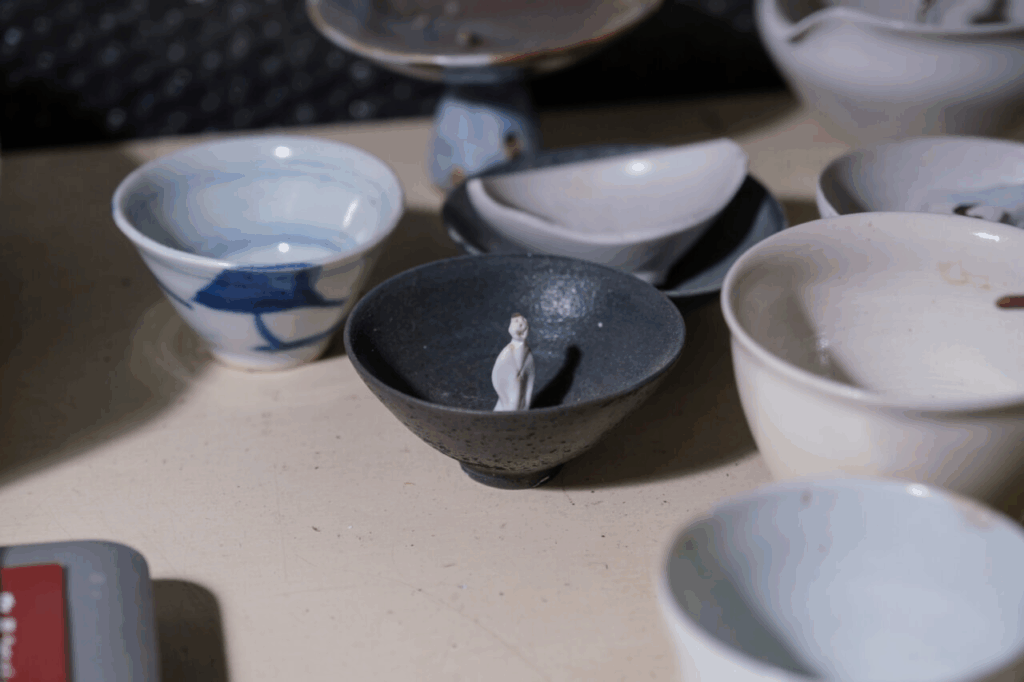
In addition to the Full Moon Jar, we also place great importance on creating “works that blend into everyday life,” which can be used daily regardless of age. Our wide range of products includes everyday mugs, plates, sake sets, flower vases, and Chinese tea sets. The simple yet unique texture gives them a stylish feel, rather than just plain white. Even though they are white, there are various types, and the white created by Che Je-ho has a warm feel to it. The “human-shaped” accent series, featuring a solitary figure at the center of sake sets and plates, is popular among younger customers and reflects Choi Je-ho’s playful spirit.
Drawing inspiration from the beauty of the natural patina that develops over time in Korean white porcelain, which is cherished and nurtured by its users, Choi Je-ho creates works that embody this concept.
Imagining vessels that shine in the changing light of morning, noon, and night, he relies on his own senses to create pieces that blend seamlessly into any usage scenario, deliberately leaving fingerprints as a mark of his craftsmanship. The crisp, elegant presence and the soft curves that convey a subtle sensuality are qualities he believes will resonate with even the most discerning connoisseurs of modern design.
A challenge to the art scene: the world of black and white
In 2019, he received a passionate offer from Glen Ligon, an artist based in New York who works with a variety of materials such as painting, neon, photography, and video, and a collaborative project was realized. The project was exhibited at “RAT HOLE GALLERY,” a gallery operated by the fashion brand “HYSTERIC GLAMOUR,” and expressed Ligon’s roots. Rygon, who creates works based on modern art and conceptual art, commissioned me to “express a symbolic white full moon vase in black.”
The black full moon vase created by the white porcelain artist, with its rough surface texture contrasting beautifully with the white porcelain full moon vase, garnered much attention.
The ‘black world’ no one has ever challenged
The completed black full moon vase evokes a sense of the universe. From a distance, its deep black hue seems to draw one in. Upon closer inspection, the surface resembles the dark side of the moon or the frozen surface of snow, with its uneven texture, resulting in a powerful piece. It was provisionally named “Black Porcelain Full Moon Vase.”
The contrast between the subtractive approach of using black to express “stillness and movement” and “beginning and end,” and the subtractive approach of using white to express the same concepts, symbolically represents modern art. This successfully expands the traditional expression of the full moon vase, which is characterized by its shape evoking a full moon and its milky white color.
Unlike any other white porcelain, Choi Je-ho’s “Choi Je-ho White Porcelain” is a hybrid presence that combines the passion for craftsmanship woven by Korea with a new expression for the modern era, somehow warming the hearts of those who hold it.
“White porcelain has no charm without sensuality,” says Choi Je-ho, yet there is indeed an inexplicable allure that draws one into its warm embrace. The vase’s ever-changing expression as one approaches seems to reflect the artist’s personality. Choi Je-ho will continue to express the beauty of Korean white porcelain through his unique interpretation of white and texture.



